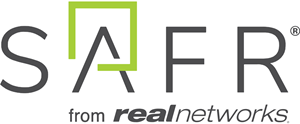
2022 predictions for physical security industry from SAFR.
SAFR? shared its top predictions for the physical security industry in 2022. These include letting go of fears around AI, embracing hybrid cloud solutions and embracing pandemic-driven use cases.
Better Conversations Around Artificial Intelligence (AI)
Their current conversations about AI are frequently fear-based. Coverage in the media has been dominated by depictions of rampant bias and invasions of privacy. While these are legitimate concerns, allowing fears to dictate the conversation runs the risk of keeping them from getting to the potential benefits. The trend for 2022 will be to move away from this fearmongering and towards more balanced perspectives and a greater understanding of the challenges and possibilities of this emerging technology.
This does not mean taking a stance of false complacency where they accept AI as a panacea that will solve all their problems. On the contrary, engineers and product creators must continue to be vigilant about privacy and bias and create solutions that mitigate risk.
When it comes to bias, for example, they must be wary of how it can infect AI models and how historical bias in a dataset?s ground truth can be amplified by an algorithm. SAFR is very active in this area and has recently funded a research program at the University of Washington to explore bias and develop policy recommendations.
Moving Towards the Edge
For compute intensive computer vision applications, it has become increasingly clear that it is not feasible to perform this processing solely in the cloud. Uploading thousands of hours of raw video is a poor use of cloud resources and bandwidth. In contrast, processing raw pixels at the edge, before they are even compressed, is more accurate, efficient, and secure. Moving all business operations to the cloud can also create single points of failure that could be catastrophic for organizations. But the solution is not to abandon the cloud and move back to working on-premises. Instead, 2022 will see the creation of more hybrid solutions where a lot of processing is done at the edge, while the cloud remains responsible for coordination and orchestration of massively distributed computer vision applications.
One of the advancements that is helping us move in this direction is that video cameras are getting smarter. In fact, they?re so smart that the entire SAFR stack can now be ported to System on a Chip (SoC) processors that power some of the world?s leading cameras.
With a hybrid solution, events are coordinated in the cloud while video is processed at the edge. This is more scalable in terms of cost as organizations don?t have to pay to move data from the cameras to the cloud for processing and then back to the organization for review. This also increases data privacy since facial or biometric data doesn?t leave the camera or get sent across the network. And, because the analytics uses the raw pixels directly from the camera instead of pixels that have been compressed, encoded, and decoded, the results are also more accurate.
Learning from Pandemic Use Cases
While the COVID-19 pandemic is not over, we have certainly learned from our experience of helping organizations work to contain the virus and keep populations safe. In 2022, the security industry will focus on developing touchless security solutions to minimize reliance on physical credentials and to replace communal surfaces like fingerprint scanning at airports. These touchless solutions will mitigate the spread of the virus by reducing in-person interactions as well as the number of surfaces people touch.
A good example is a hotel using a touchless application for video analytics. Here, guests who are enrolled in the hotel?s VIP program are first recognized by video cameras in the hotel lobby as they enter. Once guests are identified, the system automatically pushes a notification to their phone that matches them to their reservation and provides them with their room number. This means guests don?t have to wait in line at the check-in desk or come into direct contact with hotel staff.
Once at their room, guests can unlock their door by using either facial recognition or a QR code that has been sent to their phone as part of the automated check-in procedure.

SAFR from RealNetworks is a high-performance computer vision platform. With fast, accurate, low-bias face recognition, SAFR leverages the power of AI to enhance security and convenience for customers around the globe.
Source: safr.com
Source: safr.com
